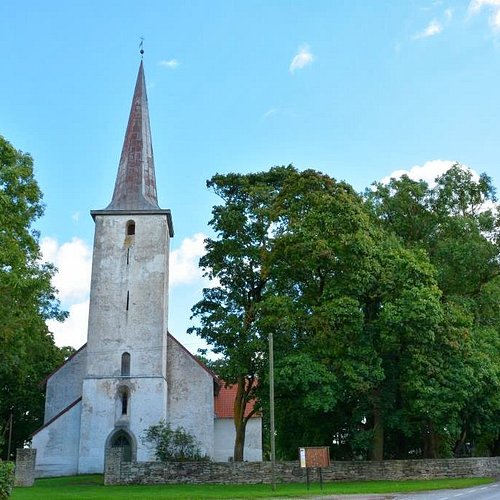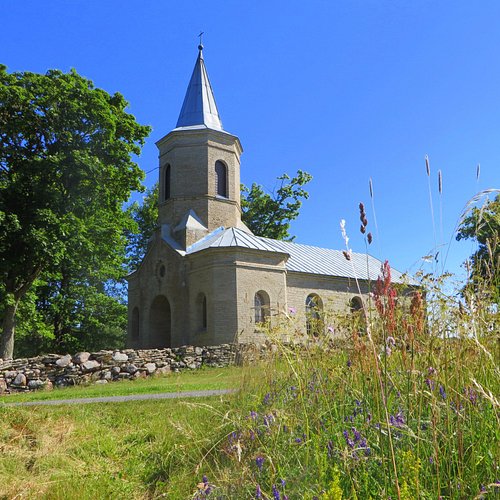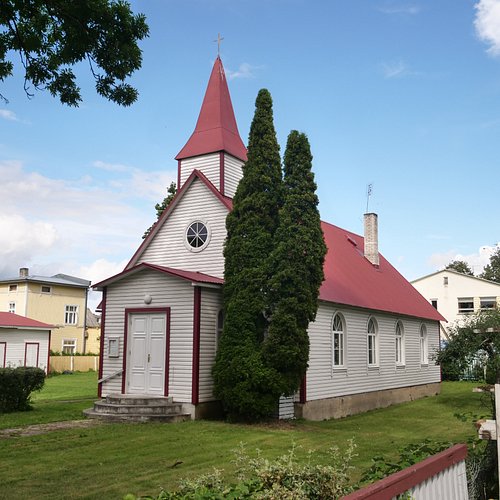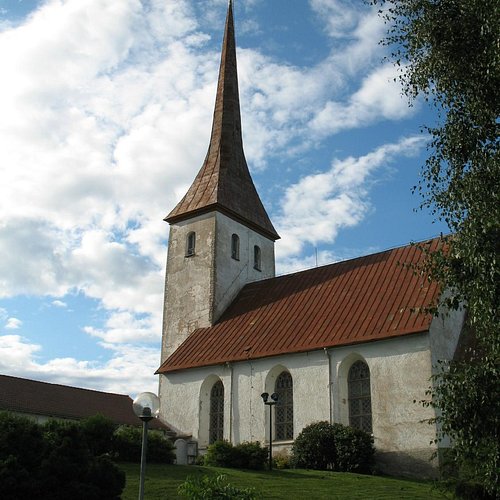10 Churches & Cathedrals in Laane-Viru County That You Shouldn't Miss
Discover the best top things to do in Laane-Viru County, Estonia including Ilumagi Chapel, Viru-Nigula kirik, Vainupea Chapel, Birth of the Holy Mother Orthodox Church, Rakvere Methodist Church, Kasmu Chapel, Rakvere Church of the Trinity, Church of St. Catherine, Ruins of St. Mary's Chapel, Vaike Maarja Church.
Restaurants in Laane-Viru County
1. Ilumagi Chapel
Overall Ratings
5.0 based on 1 reviews
Ilumagi chapel was built by Palmse’s Baron Carl Magnus von der Pahlen between 1814 and 1843 on the site of a former wooden chapel. Its windows are adorned with stained glass produced by the Pahlens and wealthier farmers and officials from Palmse manor. In the cemetery you will see the handiwork of local smiths and stone hewers in its crosses. The fenced-off section of the cemetery holds the remains of the Pahlen family.
2. Viru-Nigula kirik
3. Vainupea Chapel
Overall Ratings
4.5 based on 4 reviews
Vainupea Chapel was consecrated in the summer of 1893. However, the first written mention of the wooden beach chapel dates back to 1741. The construction of the present chapel was organised by Eduard von Dellingshausen, who was the squire of Aaspere and Sauste manors. The chapel was empty for years after the Second World War until Laane-Viru Road Administration and Valentin Transtok launched restoration works in 1988. The restored chapel was re-consecrated in 1989. Today, the chapel is a popular venue for concerts and weddings.Did you know that:- Estonian painter Richard Sagrits, who was born in Karepa near Vainupea, is buried in the nearby cemetery.
4. Birth of the Holy Mother Orthodox Church
Overall Ratings
4.5 based on 11 reviews
A church in the Old Russian style. The church contains the holy remains of the martyred priest Sergei Florinski, which are the only public holy remains in Estonia. The church is place for pilgrimage in the Russian Orthodox Church.
5. Rakvere Methodist Church
6. Kasmu Chapel
Overall Ratings
4.0 based on 9 reviews
The village of Kasmu is home to a wooden chapel, erected using money donated by the villagers in 1863. The surrounding cemetery is the final resting place of more than 30 sea captains who brought prominence to the village. The cemetery has one of Estonia’s most beautiful monuments, erected by a Captain Tiedemann in memory of his most beloved daughter Signe, who died at a young age. Made in Finland from cast metal, the monument was completed in 1937.
7. Rakvere Church of the Trinity
Overall Ratings
4.0 based on 25 reviews
A late medieval church with an unusually high and slender spire that was built in the 17th century. Grave marker of Bishop Arnoldus H. Annabat. Eye-catching Baroque fretwork masterpieces – the pulpit and altar wall.
8. Church of St. Catherine
Overall Ratings
4.0 based on 2 reviews
Saint house with slender tower. There is a lot to see: wall paintings, late medieval crucifix, rare organ. In the church garden the Freedom war monument. Before entering the church it is worth to look at the outer wall of church that is decorated with small cross signs.
9. Ruins of St. Mary's Chapel
Overall Ratings
4.0 based on 3 reviews
The ruins of St. Mary's Chapel, first constructed in the 13th century, are located in Viru-Nigula. It is thought that the chapel was built to celebrate victory over the Russians by the Livonian Order in the battle of 1268. After the Lutheran reformation the chapel fell into disuse and became a focal point for folk superstition, which led to its partial demolition in the mid-17th century and its later collapse. The ruins that remain today remind us how unique the chapel was in terms of the differences in its construction from the other chapels of the time influenced by the East. Did you know...? *The chapel is thought to be the oldest stone sacral structure in this region of Estonia
10. Vaike Maarja Church
Overall Ratings
3.0 based on 1 reviews
Vaike-Maarja Church dates from the 14thC and is a three-nave hall church in Gothic style that was originally built as a fortress church. In 1848, Gustav Normann installed the organ. In 2002, the glass artist Riho Hutt restored the altar paining "Come to me" and the stained glass window "Let the children come to me". In 2003 he completed the rose window "Hyperdulia". The churchyard contains the graves of the famous discoverers Krusensterns and the Lurich family.









